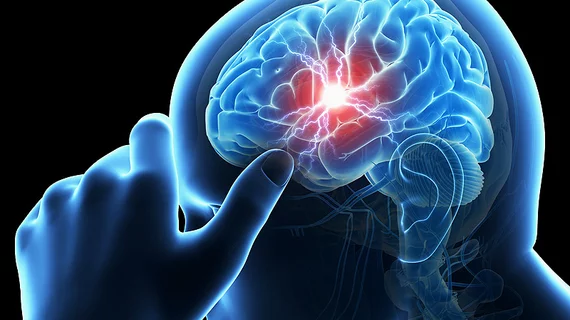MRI can help diagnose minor stroke and transient ischemic attacks (TIA) in patients who experience symptoms that aren’t always associated with stroke, according to a multi-year study published Sept. 23 in JAMA Neurology.
The risk of stroke increases after a patient experiences an initial TIA, wrote first author Shelagh B. Coutts, MD, and colleagues. In fact, those with motor or speech symptoms lasting more than five minutes are especially at risk and must be seen quickly. More than half of patients with possible symptoms of a TIA, however, don’t exhibit these symptoms.
"If you don't have motor and speech symptoms, the diagnosis is a lot less clear--so patients with numbness, dizziness or with difficulty walking may not be diagnosed with a stroke syndrome,” Coutts, a neurologist at the Alberta Health Services’ Foothills Medical Center, said in a prepared statement. “These patients are, overall, felt to be at low-risk of having stroke."
As part of the Diagnosis of Uncertain-Origin Benign Transient Neurological Symptoms (DOUBT) study, physicians analyzed more than 1,000 patients within eight days of the onset of their symptoms. They executed a neurological assessment, recorded patient history, completed a diagnosis and performed an MRI scan within the first week.
Overall, 13.5% of patients had a diffusion restriction MRI-detected stroke, “far higher than we expected,” Coutts et al. noted. And in 30% of cases, the physicians altered their diagnosis after reading the patient’s MRI scan.
“That's not just to change patients to having a stroke," Coutts added. "There's also the reverse where we thought they might have had a stroke or TIA but based on a negative MRI scan (and other clinical symptoms) we decided it wasn't."
In a related editorial, Margy E. McCullough-Hicks, MD, and Gregory W. Albers, MD, both with Stanford University’s Department of Neurology, wrote that if the study’s “protocol” were put into practice and implemented quickly after symptoms appeared, a “substantial reduction in stroke recurrence in this population would be anticipated.”
“We applaud the authors on completing this important study and encourage the stroke community to embrace the evidence and increase the use of MRI for these patients,” the researchers wrote. “Future studies should include the role of vessel imaging in this population, particularly in regard to its value in determining recurrent ischemic events.”

